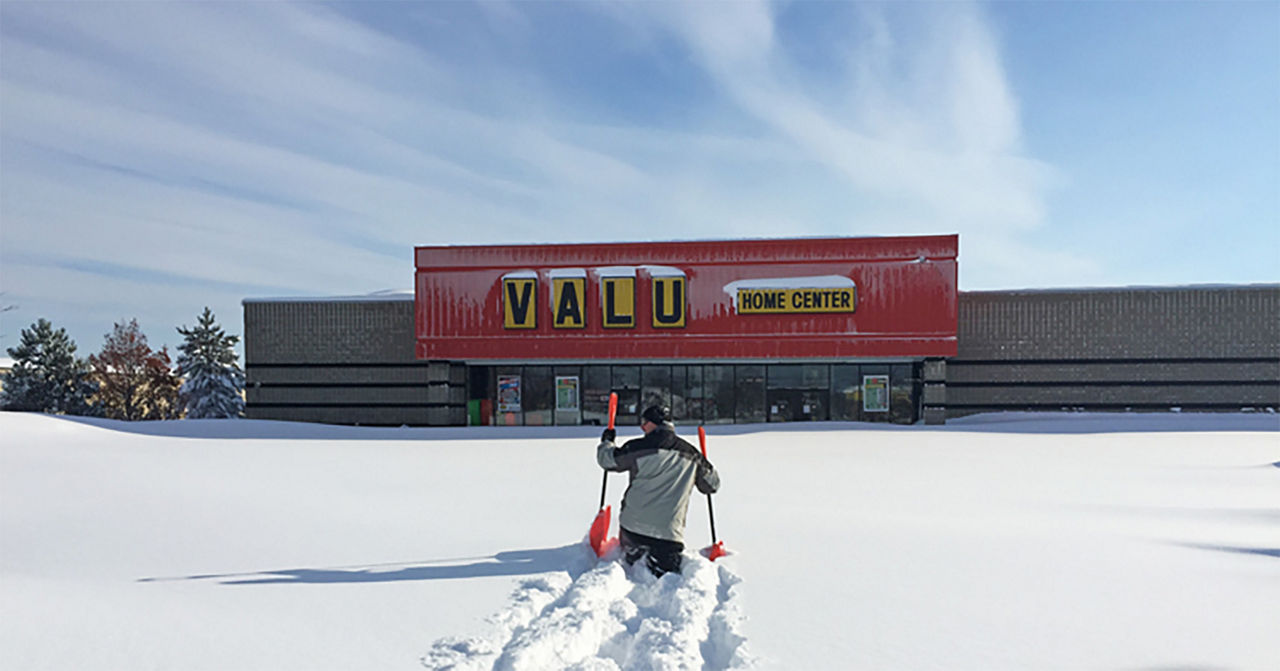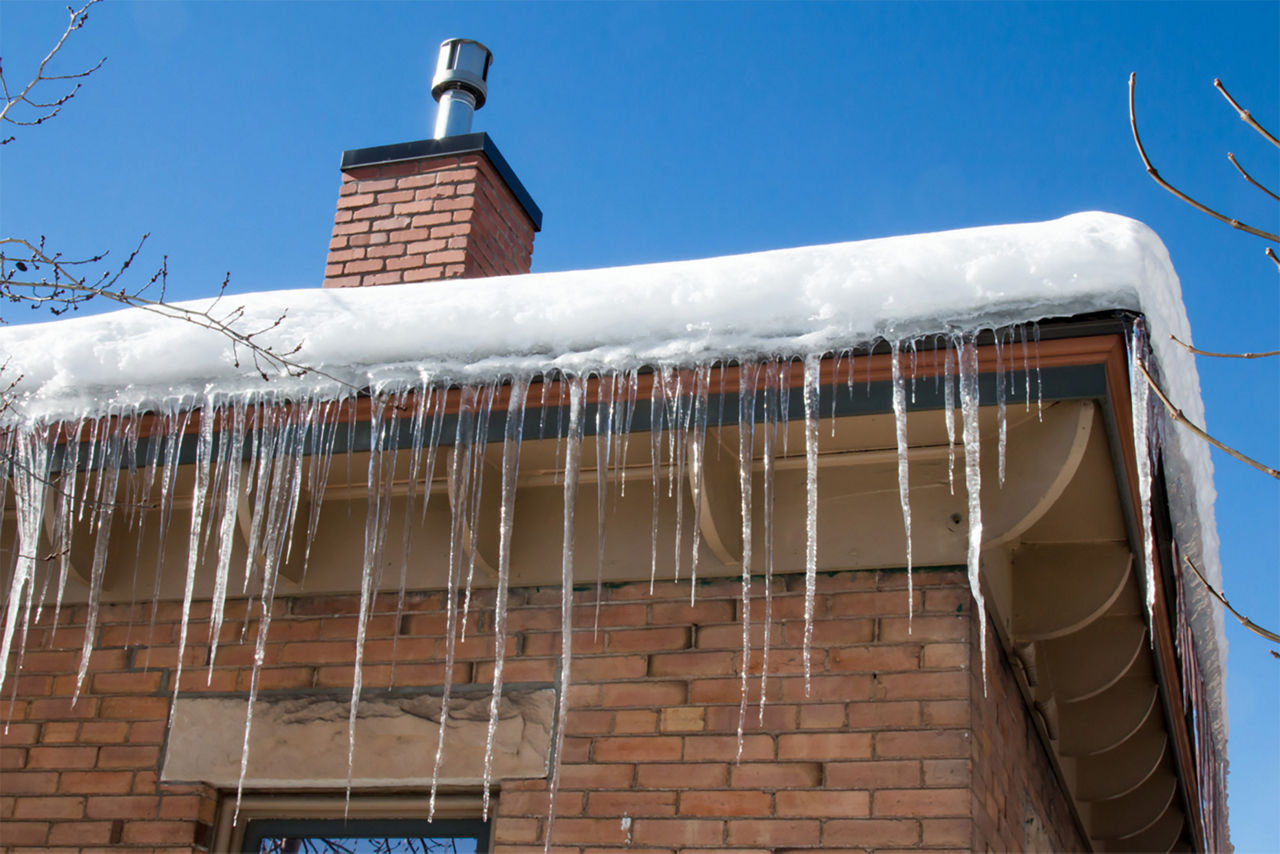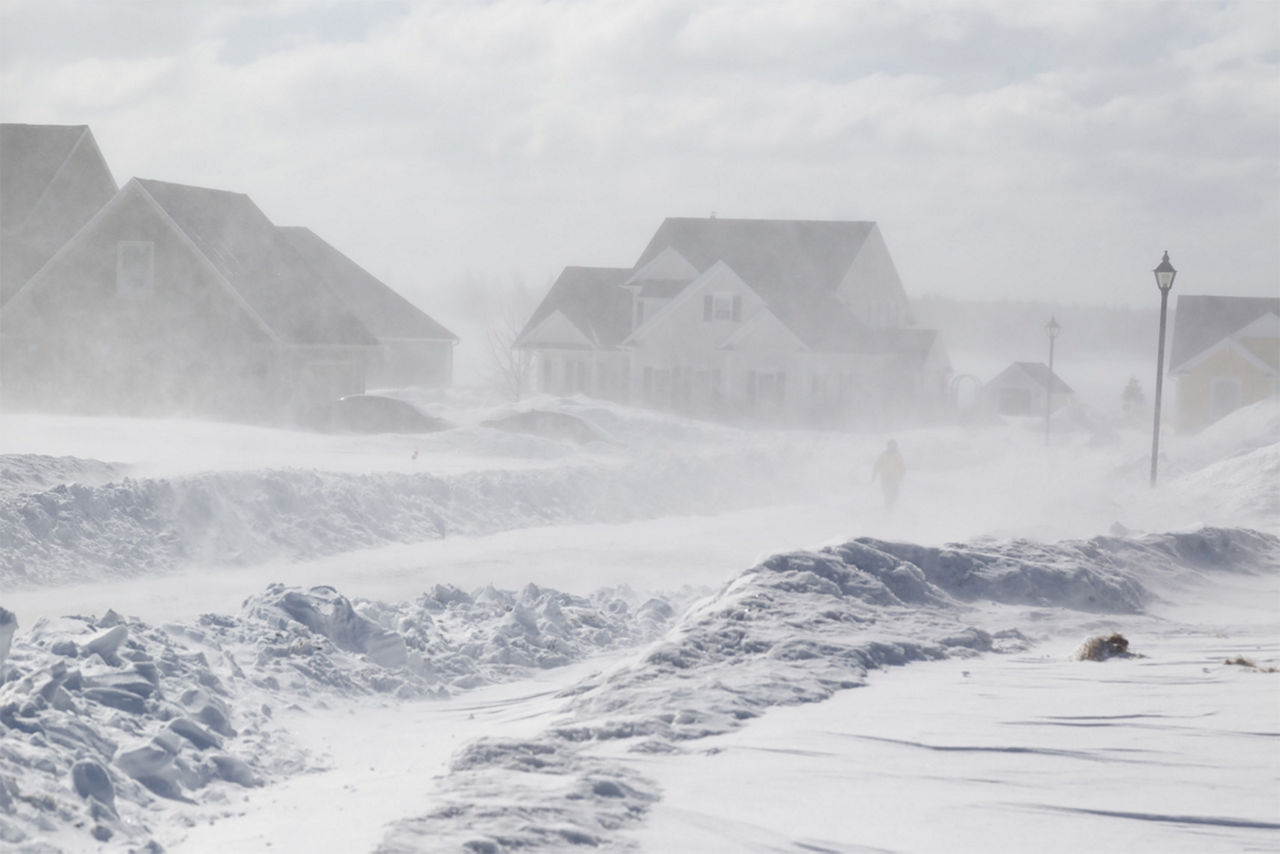Protect Your Home Against Extreme Cold Weather

Extreme cold weather can cause problems for both you and your home. Here are some tips for when snow, ice, and subzero temperatures hit your area.
How to Deal with Frozen Pipes

- Disconnect and drain garden hoses.
- Cover outside faucets with insulating foam covers.
- Turn off water to outside faucets, if available, and open valves on faucets to allow them to drain.
- Turn off your sprinkler system and blow compressed air through the lines to drain them.
- Close or cover foundation vents under house and windows to basements.
- Close garage doors.
- Insulate exposed pipes (both hot and cold) under the house with foam pipe insulation.
- Open cabinet doors under sinks.
- Drip hot and cold faucets in kitchen and bath. Drip single control faucets with lever set in the middle.
- Set ice-maker to make ice if the water line to it runs under the house.
- Don’t forget to check on pipes to your washing machine in the laundry room
- Locate water main cut-off valve, and have a cut-off key handy.
- Use a hair dryer, heat lamp, electric heat tape, or a portable space heater to thaw frozen pipes that have not burst.
- Keep the faucet open when thawing frozen pipes to allow water to begin flowing through it.
- After the weather has warmed above freezing and any frozen pipes have thawed, turn off dripping faucets and monitor your water meter to check for unseen leaks.
NOTE: If you have a crawl space or live in a mobile home, dripping your faucets may freeze up your sewer lines with slow moving water.
How to Stay Warm in Your Home

- Have your furnace inspected before cold weather arrives. Inspect the heat exchanger for cracks, install a clean air filter, and check the thermostat to see if it’s working properly.
- Inspect fireplaces and chimneys before you use them. Have them cleaned if needed.
- Keep drapes and blinds closed, except when windows are in direct sunlight.
- Put up storm windows, or install sheet plastic window insulation kits on the inside of windows.
- Cover or remove any window air conditioners.
- Insulate electrical outlets and switches on exterior walls with a foam sealant, such as Great Stuff.
- Caulk any cracks or holes on the outside of your house.
- Repair or replace weather stripping and thresholds around doors and windows.
- Run paddle ceiling fans on low in reverse (clockwise when looking up) to circulate warm air.
- Put draft seals on window sills, between window frames, and against doors.
- If you heat with propane or fuel oil, make sure the tank is full.
- If you heat with wood or coal, have plenty of fuel on hand.
How to Protect the Outside of Your Home

- Use rock salt, sand, or clay based kitty litter on walks and drives (NOTE: Salt can damage grass and other plants).
- Check antifreeze levels in cars. Add if needed, then run the engine to circulate the new antifreeze through the radiator and engine block.
- Add freeze resistant windshield wiper fluid, and spay to circulate it in lines.
- Check air pressure in tires, since cold weather causes the pressure to lower.
- Bring in container plants, add mulch around plants, and cover plants that are prone to frost damage. Remove covering when temperatures warm above freezing.
- Drain birdbaths and fountains.
- Gently sweep snow off plants and shrubs in an upward motion with a broom.
- Don’t overdo it when using a snow shovel.
- Stay off your roof during freezing weather, but once the ice and snow have melted, inspect your roof for any damage.
How to Stay Safe in an Ice or Snow Storm

- Stockpile non-perishable food and water.
- Refill prescription medications in advance of a storm.
- Fill cars with gas.
- Charge cell phones.
- Have flashlights, batteries, a weather radio, and a manual can opener on hand.
- A portable generator may come in handy if the lights go out, but take precautions to avoid carbon monoxide poisoning.
- Check your smoke and carbon monoxide alarms.
- Make sure to have a working fire extinguisher in case of emergency.
- A chainsaw will be useful for removing broken limbs after a storm.
Have more ideas?
If you have any tips or tricks for keeping you and your home safe during freezing weather, make sure to share them below!